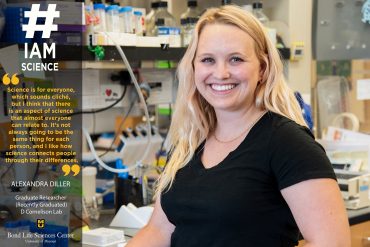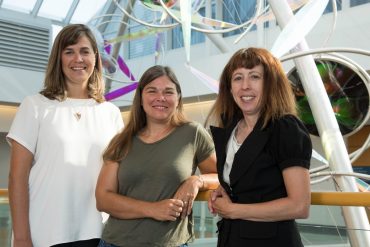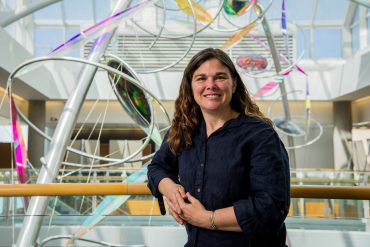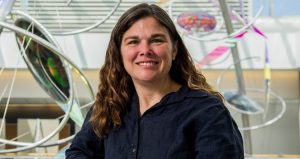Signaling and Activity of Skeletal Muscle Satellite Cells
D Cornelison Lab
Research Interests
The Cornelison lab studies development, regeneration and disease in mammalian skeletal muscle, with a focus on extracellular signaling pathways that modify muscle stem cell behavior. These tissue-specific stem cells (satellite cells) are necessary for muscle regeneration, and follow a characteristic pattern of activity in response to local muscle damage. In uninjured muscle they rest in a quiescent, nonproliferative state between the cell membrane of their host muscle fiber and the basal lamina surrounding it. Unlike the majority of adult stem cells, satellite cells do not have a highly organized ‘niche’ to regulate their proliferation and self-renewal. When they sense muscle damage, satellite cells are activated out of quiescence, upregulate muscle-specific genes, and proliferate to form a pool of replacement myoblasts that will eventually differentiate into new muscle cells to repair or replace muscle tissue that has been lost or damaged. Satellite cells that are not directly in the damaged area can be activated as well and recruited to the site to participate in muscle regeneration. The signaling molecules controlling satellite cell activation, proliferation, migration, differentiation, and self-renewal are produced by the muscle fibers, muscle fibroblasts, inflammatory immune cells, and the satellite cells themselves, and are dynamically expressed in space and time.
The lab’s ‘big picture question’ is how satellite cells integrate and respond to extracellular signals in order to rapidly, efficiently, and repeatedly respond to muscle damage or disease. Recently, the lab’s research has centered on satellite cell motility and migration. They are working to identify soluble factors released during muscle damage that would promote satellite cell motility and recruitment; matrix-modifying factors that would allow satellite cells to travel through the extracellular matrix; and guidance factors that would direct satellite cell migration pathways and facilitate self-sorting. They study satellite cells from wildtype and disease models of mouse, dog, and human in culture using timelapse microscopy, immunohistochemistry, and gene expression assays, as well as in vivo models of muscle injury and disease in mouse. The lab also studies satellite cell interactions with nonmuscle cells including neurons, glia, macrophages, and interstitial cells. Potential applications of their work are improving cell transplant therapies for conditions such as Duchenne’s muscular dystrophy.
LAB MEMBERS
In the news

Aug. 9, 2023
#IAmScience Alexandra Diller
By Sarah Kiefer Alexandra Diller jumped off a cliff, in a sense. Instead of taking on more clear and straightforward science, she dove into vessel regeneration and never looked back as she works on the burning question, ‘can muscles regenerate in the absence of blood vessels and vice versa?’ “Knowing how vessels grow back can one day improve treatment options and help someone who has suffered a traumatic muscle injury and I really like contributing to that, but at the same time I want to know and do more right now” said the D Cornelison…

Aug. 31, 2017
Women Power At Bond LSC
Melissa Mitchum, D Cornelison and Cheryl Rosenfeld (from left to right) of Bond Life Sciences Center were promoted to full professor on September 1, 2017. Three Promoted to Full Professor By MJ Rogers, Bond LSC Scientific success largely hinges on research results, and four recent promotions at Bond Life Sciences Center celebrate that achievement. Cheryl Rosenfeld, D Cornelison and Melissa Mitchum of Bond Life Sciences Center were promoted to full professor as of September 1, while Laurie Erb received a promotion as a non-tenure-track research professor. They are the first…

Jan. 11, 2017
Cornelison receives highest honor from White House
It feels good to get recognition, especially when it comes from the White House. This week D Cornelison, a Bond Life Sciences Center researcher and associate professor of biological sciences found out she will receive a Presidential Early Career Award for Scientists and Engineers (PECASE). The award is the highest honor bestowed by the United States government on science and engineering professionals in the early stages of their independent research careers. She joins 102 researchers this year selected by the White House to receive this prestigious award. This is a first for Missouri as a state…

